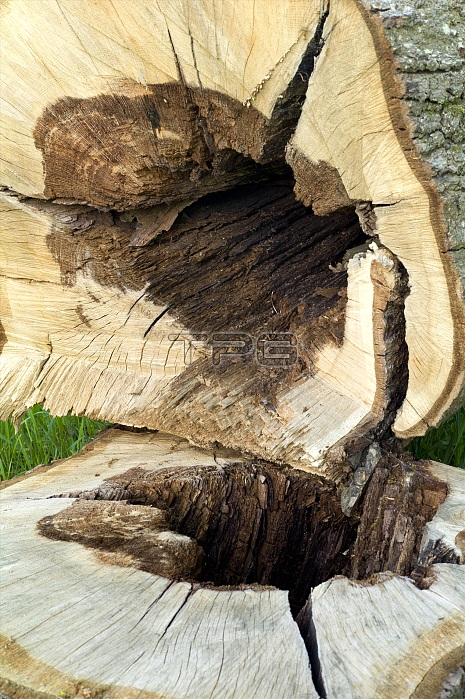
A felled sessile, or durmast, oak tree (Quercus petraea). The picture shows the stump and the lower edge of the detached trunk of a parkland tree in Cumbria, UK. The centre of the tree is hollow, due to decay of the heartwood. Heart rots are caused by fungal pathogens, of which Fistulina hepatica, the so-called beefsteak fungus, is a common agent in Quercus species. Infection may occur through wounds resulting from mechanical or storm damage, or through the natural loss of limbs due to dieback. In nature, absence of heartwood is not necessarily detrimental to the tree; many of the oldest oaks are hollow, and provide a sheltered habitat within their trunks for a wide range of invertebrate species. However, in the vicinity of buildings or within public spaces, as here, trees discovered to be hollow are regarded as potentially dangerous, and often felled in the interests of safety.
| px | px | dpi | = | cm | x | cm | = | MB |
Details
Creative#:
TOP19257240
Source:
達志影像
Authorization Type:
RM
Release Information:
須由TPG 完整授權
Model Release:
N/A
Property Release:
N/A
Right to Privacy:
No
Same folder images:

 Loading
Loading